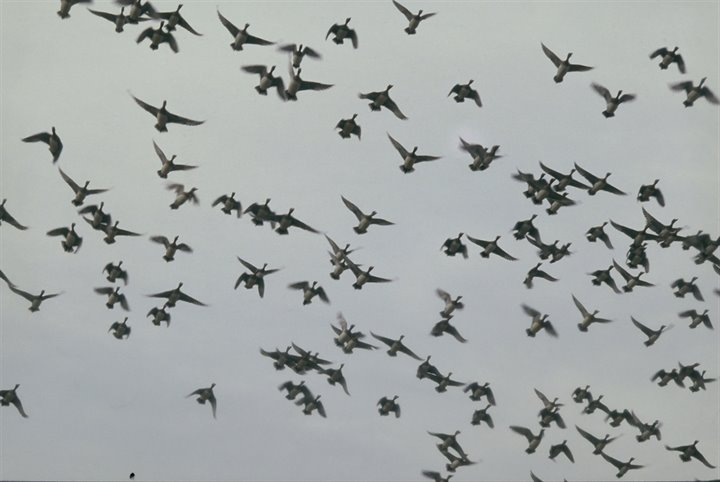Start/Stop in a wind farm site decision
In the first part of the process of developing offshore wind energy, the Minister of Climate Policy and Green Growth (KGG) allocates sites. 'Site decisions' are taken in relation to these sites, which cover issues such as where a wind farm may be built and operated and the conditions associated with building and operation. One of those conditions is respecting the Start/Stop procedure.
Once a site decision has been adopted, requests for tenders for a wind farm can be issued. The ultimate wind farm owner, the party that is awarded the tender, shall conform to the conditions of the site decision, such as the condition on bird curtailment - the near shut down of the turbines - as soon as the limit value for large-scale bird migration in the vicinity of the offshore wind farm has been reached, according to the prediction. So the new wind farm owner is obliged to abide by the Start/Stop procedure and, when a bird curtailment is announced, reduce the speed of the turbine blades to a maximum of two revolutions per minute.
This condition applies to wind farms for which there is a site decision in force. That is to say that the current model applies, for the time being, to the wind-farm zones parallel to the coast of Zeeland and Holland. At a later stage, a start will be made with a separate model for the wind-farm zone Ten Noorden van de Waddeneilanden. A third model, for areas further out from the coastline, will be developed in years to come.
Network operator TenneT is involved in the procedure; the network operator contributes to the smooth implementation of the protocol by carefully assessing - prior to a curtailment - whether or not the curtailment might result in network instability or a potential energy shortfall.

Other measures to prevent collisions
Although the Start/Stop measure is specifically aimed at migratory birds, the government is working on other measures to reduce bird collisions, too. This generally concerns marine birds. Studies are being carried out to see whether a black turbine blade could help to reduce bird collisions, for instance. And also whether the design of the wind turbine itself could be modified. Raising of the tip clearance (raising the height of the clearance, assuming the tip of the blade is pointing straight down) could have a positive effect for certain types of bird. We are always looking into new possibilities to prevent as many offshore wind farm bird collisions as possible, in line with nature legislation. The development of measures to prevent bird collisions is a responsibility shared by all offshore wind farms.
Each year, thousands of migrating birds fly over the North Sea during the spring and autumn migrations. Migratory patterns over sea involve hundreds of different species of birds such as waders, ducks, swans, geese and raptors. The largest group in numerical terms, however, is made up of song birds, such as redwings and song thrushes. During migration, birds that fly at rotor height may fatally collide with rotor blades.
The Dutch Offshore Wind Energy Act gives the government the option of allocating sites for the development of offshore wind farms. The Offshore Wind Energy Act takes into account implementation of the Omgevingswet (Environment and Planning Act; until 2024 Nature Conservation Act). Bearing in mind the Environmental Act, we are looking at measures to limit the adverse effects of wind farms on migratory birds where possible. The Start/Stop measure is one example of that.